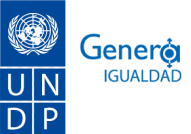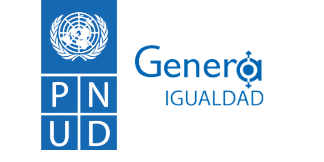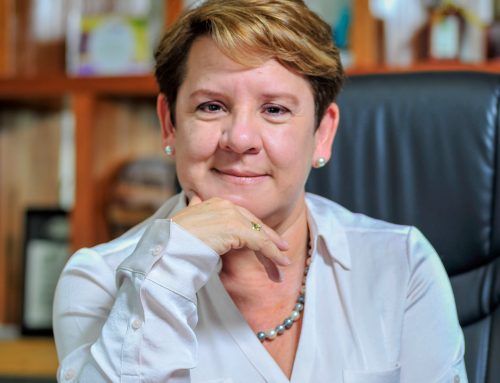Octubre 2017
Located on the path of cyclones and installed on an unstable seismic fault, Haiti is not immune to new natural disasters. Haiti is one of the countries in the world that has the highest risk index of natural disasters. This is why the need for disaster risk management is always more and more important in a country suffering from repeated natural disasters.
America Latina Genera interviewed Yvonne Helle, Country Director, United Nations Development Program (UNDP) Haiti
ALG: How does UNDP-Haiti integrate a gender perspective into its recovery strategies in the face of natural disasters?
Research carried out in recent decades has made it clear that women and men experience disasters very differently, and that women face specific and disproportionate challenges in the context of disaster response and recovery.
Given this knowledge, UNDP-Haiti is taking a proactive approach to mainstreaming gender equality and women’s empowerment in its disaster response and recovery strategies. We remain conscious of the plurality of women’s needs and interests during times of crisis, recognizing their vulnerabilities but also, their considerable capacities and contributions to economic and social recovery. Women are not helpless victims in disasters – they have critical roles to play and these roles should be supported.
While challenging in a number of ways, the post-disaster context offers us an opportunity to “build back better” ̶ an opportunity to that reconstruction of communities is carried out in a deliberate way that strengthens their resilience to future shocks. Promoting women’s empowerment and undertaking activities designed to reduce inequalities between women and men are integral aspects of building back better, since gender inequality so often creates and compounds vulnerabilities to shocks.
Hurricane Matthew, which raked Haiti’s southern peninsula and north-western tip in October 2016, was the country’s first major natural disaster since the 2010 earthquake. While able to draw upon lessons learned from our extensive post-earthquake recovery work, UNDP-Haiti has also faced additional challenges associated with this particular disaster – for example the fact that the affected communities this time were rural and remote, rather than urban and relatively accessible. There was also the added concern about persistent flooding and the risk posed by water-borne illnesses, including cholera, which were not urgent concerns in 2010. With support of a SURGE team from UNDP offices all over the world, UNDP-Haiti launched a multi-dimensional recovery strategy after Matthew’s passage, which was designed to support concurrent and complementary humanitarian and development activities and to reduce the impact of future disasters.
The vast majority of women in the Great South were already in a precarious situation before the passage of Matthew, primarily because of their over-representation in informal, invisible and low-wage economic sectors and their lack of access to land and other productive assets. In addition, persistent droughts had already been affecting the overall agricultural production of the region, threatening livelihoods and food security. The PDNA shows that, post-Matthew, their economic insecurity increased, along with their domestic workload. Since schools were being used as emergency shelters, children stayed with their families and it was women who bore the brunt of the responsibility for their care. Female-headed households ̶ which in rural Haiti are more likely to be poor than male-headed households ̶ accounted for 40 percent of households affected by Hurricane Matthew and owned 40 percent of the homes damaged by the hurricane. In addition to the considerable losses and damages their households have endured, women have also faced considerable socio-cultural and economic barriers that impede their progress and reduce their resilience. As such, they are a key target group of our recovery activities.
In order to address women’s specific challenges, a gender lens was applied in the design of all recovery activities as a means to accelerate equitable recovery of women and men affected areas, strengthen community resilience and build greater gender equality considerations into rehabilitated infrastructure and institutions.
For example, UNDP-Haiti supported efforts to ensure that the national Post-Disaster Needs Assessment (PDNA) included sex-disaggregated and gender-specific data, and that it clearly identified women’s priorities for integration in national and local recovery plans. Through our emergency employment activities, which were designed to quickly inject money into local economies and support immediate stabilization of livelihoods, we prioritized women’s participation as beneficiaries, ensuring that they had access to at least 60% of temporary jobs. We have also been supporting women to invest back into their businesses, while providing training and technical support to strengthen their business management, entrepreneurial, marketing and economic decision-making skills. In addition, we are working to mainstream gender equality and women’s empowerment into departmental disaster risk reduction policies and commune contingency plans, including through supporting increased dialogue between civil protection institutions and women’s organizations in disaster risk assessment and emergency planning processes.
Through these interventions, UNDP-Haiti is contributing toward women’s increased participation, decision-making and leadership in recovery initiatives; toward their improved access to and control over resources and benefits of recovery; and toward the strengthened capacity of state institutions to promote the rights and priorities of women and girls during and beyond the recovery phase.
ALG: What difference has gender mainstreaming made in recovery responses?
While it is early to tell the extent to which our strategies are contributing to transformative gender equality results on the ground, there have already been some promising results from the field. For example, through encouraging women’s participation in emergency employment work, we are seeing an increasing number of women begin to show an interest in pursuing livelihoods in fields that are traditionally male-dominated, such as construction and masonry. Several women who were beneficiaries of our cash-for-work programming who are now benefiting from longer-term economic recovery support are also carrying forward UNDP’s promotion of debris recycling and composting; a handful of these women beneficiaries have established some of the very first green enterprises within their communities.
Additionally, UNDP-Haiti has been working to promote greater consideration of gender issues and better use of sex- and age-disaggregated data within state institutions charged with disaster risk prevention and response. We have begun to see small but significant changes in this respect – for example, local women’s organizations are now being routinely encouraged to participate actively in civil protection planning meetings, and we are beginning to see their contributions reflected in outcome documents. There is still work to be done in terms of building gender equality capacity and establishing networks of committed gender focal points within these institutions, but the seeds are being planted, and we will continue to support them to grow.
In order to capture these results in a systematic way, we are carefully planning gender-sensitive evaluations of these activities in order to better understand how gender roles and relations may be changing as a result of post-disaster adjustments and which of these changes can be attributed to UNDP’s interventions. We also want our evaluations to be able to tell us where and how we can do better.
ALG: How in the UNDP clusters and with your counterparts, do you work on the theme of recovery and gender?
The Recovery Cluster in Haiti, which UNDP co-leads, has also adopted a gender mainstreaming approach in its strategies and activities. The group has established criteria for the validation of projects included in the national Humanitarian Response Plan, requiring that at least 40% percent directly benefit from project interventions, with a particular focus on female heads of household.
Under UNDP-Haiti’s leadership, both governmental and non-governmental recovery partners have also been trained on the revised Interagency Standing Committee (IASC) gender and age marker ̶ a tool that codes, on a 0‐2 scale, whether or not a humanitarian project is designed well enough to advance gender equality and ensure equal benefits for men and women.
In terms of inter-cluster coordination in Haiti, UNDP has positioned itself as a strong advocate for the promotion of women’s leadership. As part of its participation in the Communication with Community sub-group, UNDP has pointed out the critical need for promoting women’s voice and influence in community-based recovery structures.
ALG: What lessons could you draw from these experiences?
UNDP-Haiti prioritizes the process of active, ongoing learning through our recovery work. Monitoring, evaluating and systematizing best practices and lessons learned is a key part of our learning.
As an example of a lesson learned, we have become increasingly aware of the difficulty in ensuring crisis recovery interventions are informed by a complete gender analysis. Following a natural disaster, rapid assessments usually take the place of more comprehensive, participatory analyses, and these can often be limited in scope. For us, this challenge increases the importance of the analysis and preparation we undertake during the time in between disasters, as well as the systematization of our project evaluations and critical self-analysis. We have also learned there is much potential for more effective coordination within the UN system and with our non-UN partners in terms of sharing post-disaster data in a more efficient way.
Based on our experience, we are convinced of the importance of having dedicated, full-time gender expertise on staff providing technical support from the very beginning of the project design phase. While the number of competing priorities on the table is high during recovery planning, it is important to have someone on the team who is focused on identifying key entry points for gender mainstreaming and strategies for their operationalization throughout our planned recovery activities.
As we continue to engage women as key actors in disaster recovery, we are paying more and more attention to the need to consider their significant domestic workloads and working to find the right balance between promoting their full participation and respecting their time constraints. With the dearth of viable social protection guarantees in Haiti, we have to be careful of how much time and effort we are asking of women, while also exploring different ways of offsetting their care responsibilities through our programming.
As a way of systematizing these lessons learned, UNDP-Haiti aims to develop a women’s economic empowerment strategy that spans the continuum of our economic recovery and development work, from emergency livelihood stabilization all the way to long-term, sustainable, and green economic development. As a part of this effort, we are currently partnering with the Regional DELGEN Initiative on Local Economic Development and Gender in order to evaluate the gender impact of our immediate economic recovery programming, which will help us to identify strategies for better targeting and sustainability of our post-disaster interventions and to better respond to the diverse needs and priorities of our women beneficiaries.
Ultimately, these efforts don’t only strengthen UNDP’s work in the realm of disaster recovery, they also contribute to our overall mandate of sustainable development. Our gender mainstreaming approach remains critical as we continue our pursuit of the 2030 Agenda, offering a tremendous opportunity to achieve not only SDG 5, but also to overcome poverty, inequality and violence – to achieve all the other Goals. Gender equality is a precondition, a necessary foundation for the peaceful, prosperous and sustainable world we want. And that is why we will continue striving for it.





